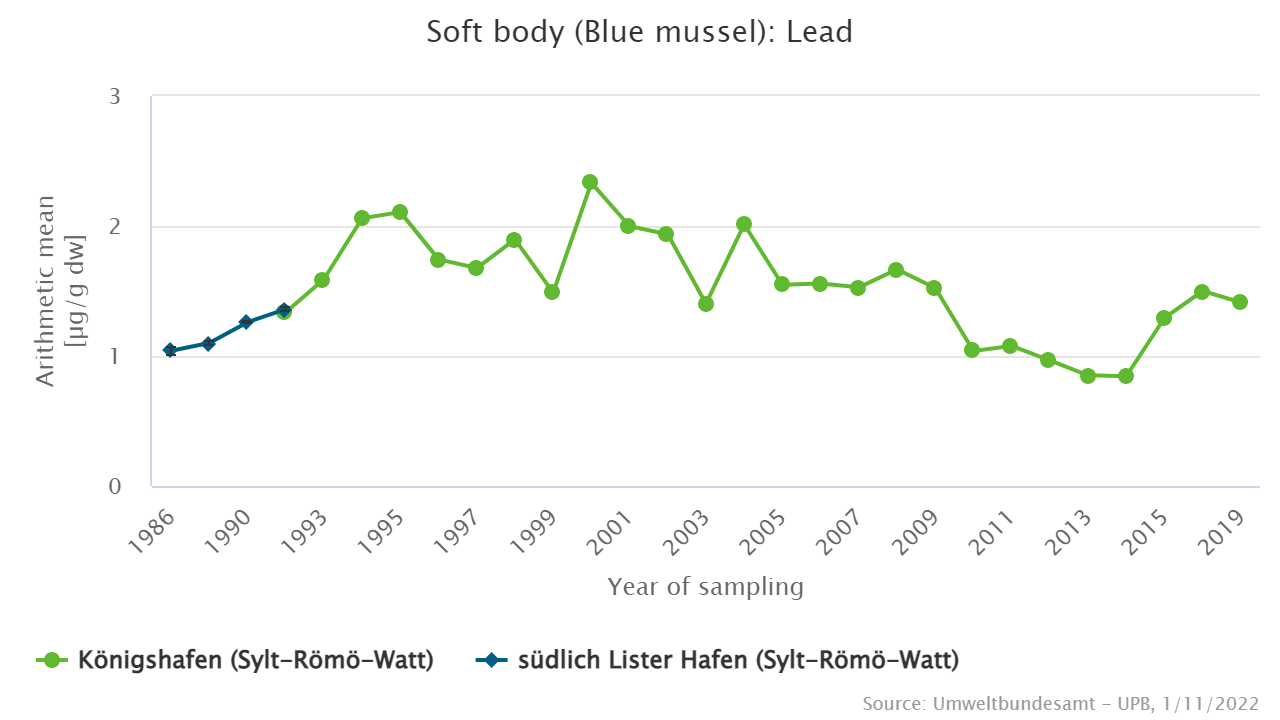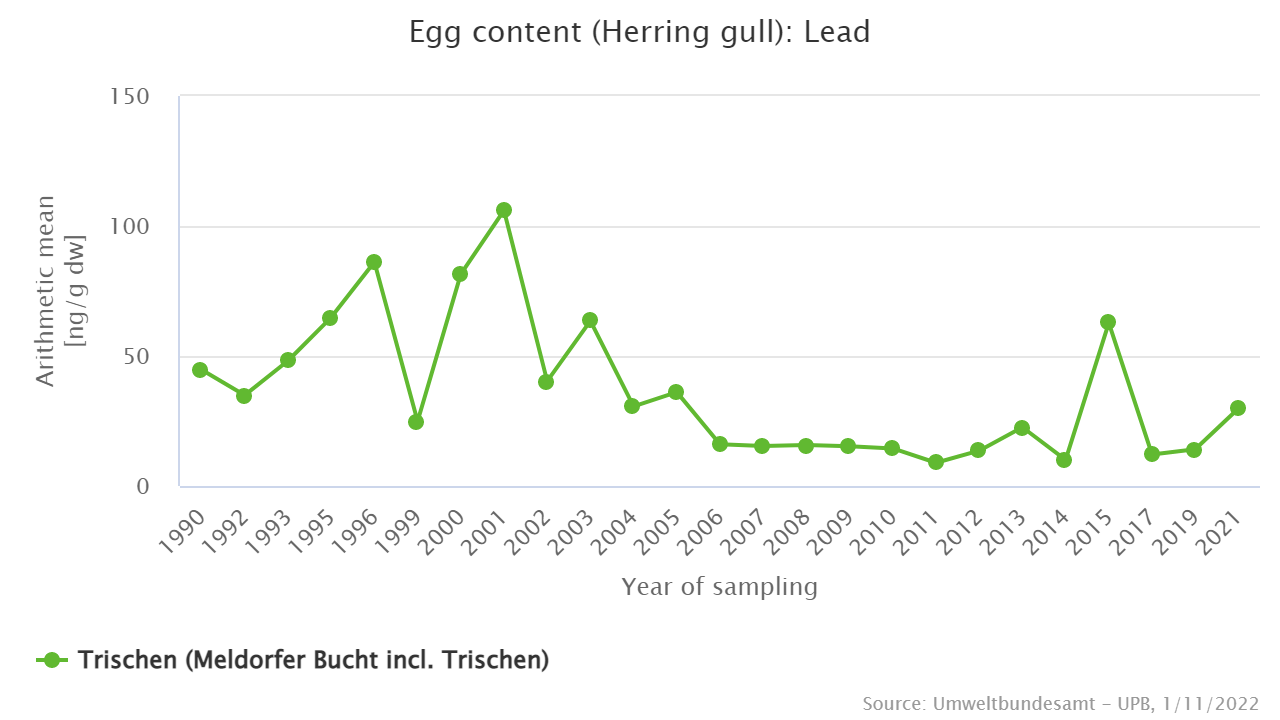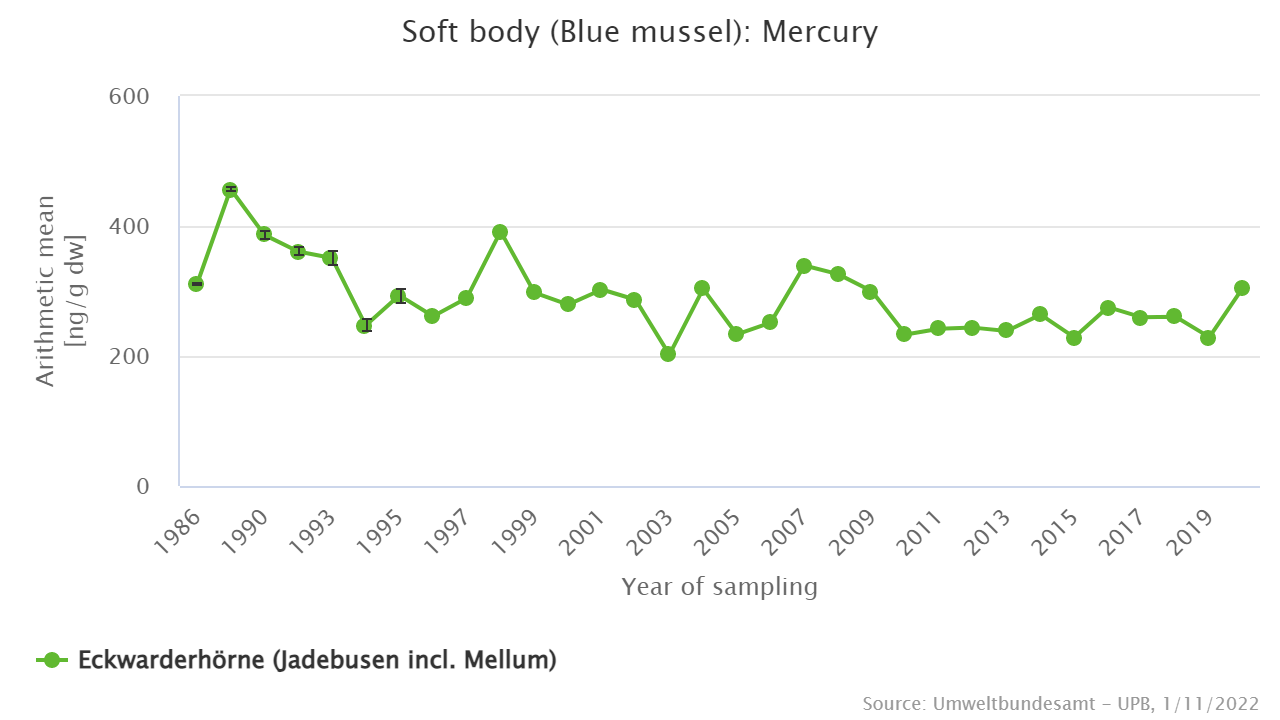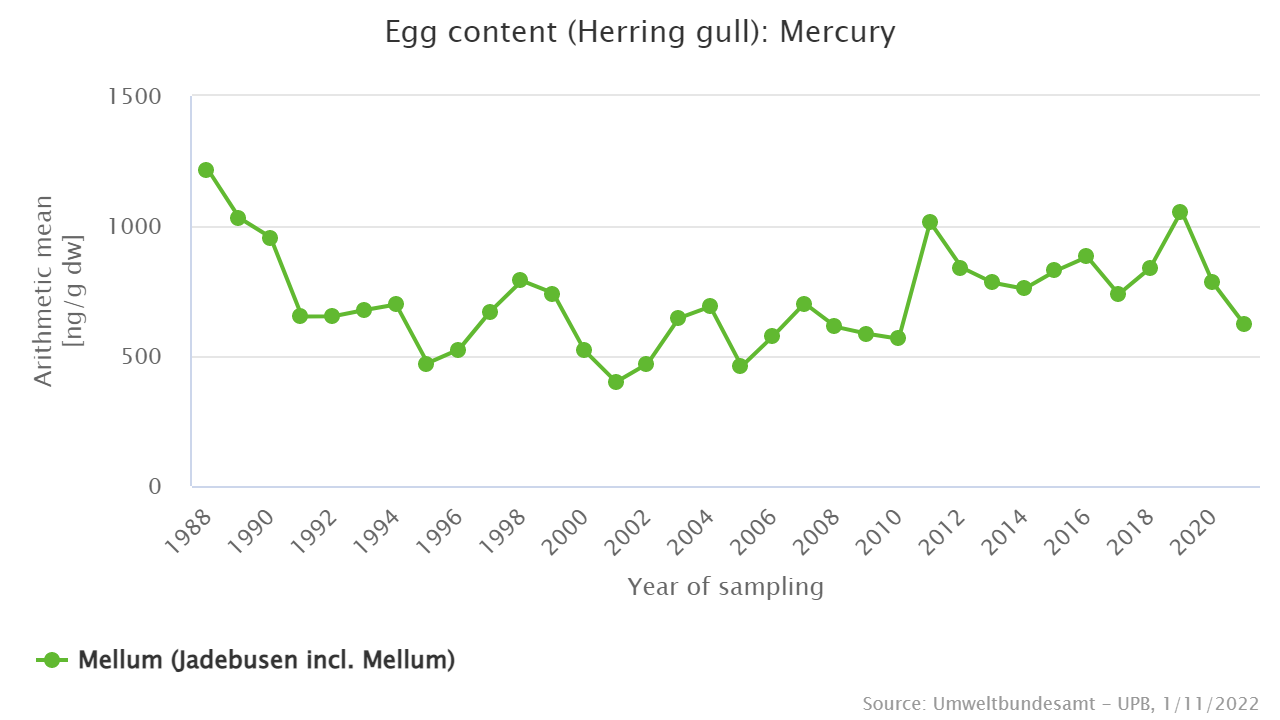Accumulation patterns of heavy metals in the marine food web
The analysis of organisms from different trophic levels allows for the assessment of accumulation patterns of substances in the food web. Lead is not enriched in the marine food web. Highest levels are found in blue mussels. In contrast, mercury is clearly biomagnified with highest concentrations in herring gull eggs.
The set of marine organisms monitored in the German Environmental Specimen Bank (ESB) belong to different levels of the marine food web.
Bladder wrack is a primary producer that builds up biomass from inorganic compounds utilizing photosynthesis. The trophic level of primary consumers (herbivores) is represented by blue mussels filtrating particles (mainly microalgae) out of the water. Secondary consumers like the eelpout are carnivores that feed mainly of primary consumers such as mussels, snails and worms. Herring gulls are omnivores and feed mainly on mussels and crustaceans.
Taking these different trophic levels into account allows the assessment of an accumulation pattern of pollutants in the environment. This can be exemplified by the heavy metals lead and mercury. Their accumulation pattern in marine food webs is quite well understood and is confirmed by the Environmental Specimen Bank data.
Lead is not enriched in the food web. Figures 1 and 2 demonstrate this exemplarily for blue mussels and herring gull eggs from the Schleswig-Holstein Wadden Sea for the period 2000 to 2010. The highest concentrations are found in blue mussels (mean: 1.69 ± 0.36 µg/g dry weight) und bladder wrack (mean: 0.51 ± 0.13 µg/g dw), whereas levels in eelpouts and herring gull eggs are significantly lower with mean concentrations of 0.07 ± 0.05 µg/g dw and 0.03 ± 0.01µg/g dw in eelpout liver and muscle, respectively, and 0.04 ± 0.03 µg/g dw in herring gull eggs.


These findings demonstrate that an environmental contamination with lead or substances with a similar accumulation pattern can best be assessed by analysing the trophic level of primary consumers like blue mussels. This is already practised in numerous national and international programmes.
In contrast, mercury is clearly biomagnified in the marine food web. This is illustrated in figures 3 and 4 with mercury contents in blue mussels and herring gull eggs from the Lower Saxony Wadden Sea in the years 2000 to 2010. Levels are lowest in bladder wrack (mean: 56.3 ± 8.3 ng/g dry weight) and increase with increasing trophic level (means: blue mussel: 278 ± 42.8 ng/g dw, eelpout muscle: 457 ± 100 ng/g dw; herring gull eggs: 566 ± 96.4 ng/g dw).


Substances with such a potential for biomagnification are expected to significantly affect the top predators of a food web.
Conclusions
The accumulation pattern of the heavy metals lead and mercury shows exemplarily the different behaviour of substances in ecosystems. The analysis of representative organisms from different levels of the food web allows the identification of those organism groups which are most affected by a contaminant. This may serve as a basis for further programmes e.g. for monitoring the efficiency of regulatory measures.
Updated at: 2022-01-11
Extended information
Literature
-
Twenty years of elemental analysis of marine biota within the German Specimen Bank - a thorough look at the data
Rüdel, Heinz; Fliedner, Annette; Kösters, Jan; Schröter-Kermani, Christa
Environ Sci Pollut Res 17 (2010), 5, 1025-1034, 2010